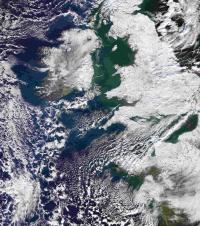OF THE
TIMES


NPR and CNN worry that Global Warming may have caused Iceland's Volcano!!!
This is just too bizarre:Diana Rehm (NPR): We do wonder whether there's human involvement in all of these eruptions, earthquakes, storms -How exactly could global warming cause a volcano to go off?
Elise Labott (senior State Department producer for CNN): - and how much global warming has a role in it. You know we've seen a lot of wacky weather but that's just a microcosm for what's happening around the world and how much climate change is contributing to earthquakes and volcanic ash - it's a really good question.
Increased temperature - > increased evaporation - > increased precipitation.Today I graphed the numbers for the US precipitation. I used the USHCN state-by-state precipitation database, which also includes area-averaged values for regions of the US, and for the US itself.
Comment: Sott.net prediction: next winter will also be bitterly cold across the northern hemisphere. It may not even end.